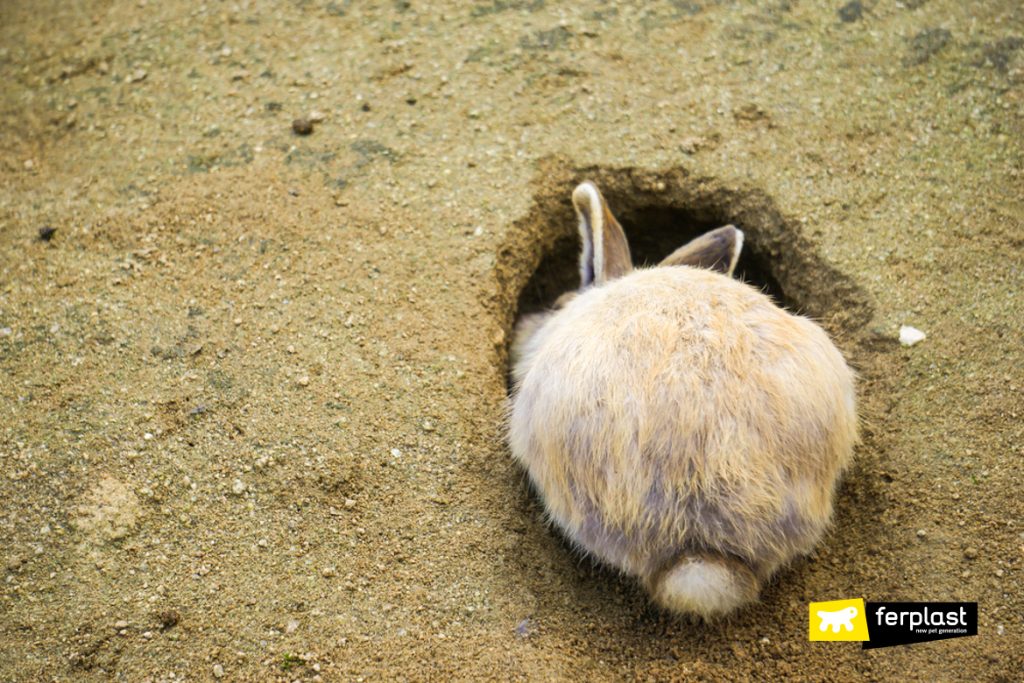If you let a pygmy rabbit dig one hole in your garden or. In suburban areas they will also look for covered areas under porches cars or by garages that.
This aids in their protection from predators.

Do cottontail rabbits live in holes. Cottontail rabbits tend to live in sheltered areas under a composted pile brush or an elevated shed. Wild hares and the most common rabbit in North America the cottontail seek shelter for resting and sleeping under thick brush shrubs seldom used sheds and other protective covers and occasionally even in a hole previously excavated by another animal. Pygmy rabbits are complete opposites of cottontail rabbits as these tend to dig too much.
Cottontail rabbits may use an evasive zig-zag pattern as they run. In each warren there are places for babies living bathroom and sleeping. This breed will still seek shelter but prefers to use existing holes.
In some cases it may go up to as long as 40 days. Cottontail rabbits live in overground nests rather than warrens. Its name was derived from its habitat which are the dry and desert areas of the region.
Hollow logs for example. The Eastern cottontail does not dig their own holes but they can re-use the burrows of other animals. The duration of pregnancy for rabbits is most certainly 31 days.
Often times such an underground home results in sink holes or a destroyed lawn. This rabbit can also live in woodlands and grasslands. The digging behavior in rabbits may depend on the species of rabbits.
A cottontail bunny normally moves about in hops but if frightened it will either freeze in place or run as fast as 18 miles per hour to try to escape predators. As such youll often see Cottontail rabbits in shallow holes or in bushes much like a hedgehogs. However the cottontail does not live in warrens but lives in nests hollows or burrows made by other animals.
Rabbits usually live in small groups and will cover a span of 10 acres of living space. Hares have not been domesticated while rabbits are raised for food and kept as house pets. The eastern cottontail rabbit doesnt dig its own burrows like some other rabbit species do so they will either find an empty burrow from another animal to crawl into or they will look for woody vegetation to huddle under during cold weather.
When the desert cottontail is not foraging for food it can live in brambles bushes or inside holes to hide from the sun and from its many predators. Theyre most active at dawn and at dusk although you. The cottontail rabbits usually like to live on the edges of fields and meadows where there are plenty of herbs and grasses and also brushwood covered with.
Cottontails do not hibernate however they are unable to dig or live in rabbits and as such you will only find them in areas like North America. Cottontails who cant find an existing warren will use any. A cottontail may also try her luck by hiding in an existing rabbit hole.
Cottontail rabbits dont dig or dont make holes because these tend to use the empty burrows that were made by other animals. An average cottontail rabbit mates as much as 4 times in the breeding period which means we can expect almost 4 batches of birth. Most rabbits live in a 5-acre area their entire lives.
Cottontails are a very common kind of rabbit and you will find them all over North America. Finally wild rabbits can burrow anywhere including in your yard garden meadows forests grasslands woodlands mountains marshlands sand dunes railway verges or even in urban areas. Cottontail rabbits possess sharp senses of hearing eyesight and smell.
All rabbits except the cottontail rabbits live underground in burrows or warrens while hares and cottontail rabbits live in simple nests above the ground and usually do not live in groups. Cottontail rabbits communicate by thumping their hind feet on. Some breeds can dig much faster than others.
However these species are naughtily lovely. Rabbits dig holes to give birth to babies. Just like most humans rabbits are particular about keeping an organized and clean home.
Hares are generally larger than rabbits with longer ears and have black markings on their fur.
